Curbside Classic: 1959 Ford Courier
Welcome to the Thursday edition of Curbside Classics. Tuesdays is for the big winners (and losers), the exceptional, the unexpected. Thursday will be for the more modest and prosaic finds. Any car a quarter century old or more still plying the streets of Eugene is worthy of our respect. Along with a helping of disdain, as needed. The 1959 Chevy Curbside Classic ignited lingering embers of the old Chevy vs. Ford (and Mopar) wars. My apologies to the younger readers who are probably bored to tears over this. I promise I’ve got something much newer and more voluptuous next Tuesday. But no less than geeber asked if a ’59 Ford could be the subject of the next CC. Be careful what you wish for, Fordophiles, because what I find sitting on the street is what you get. So here it is: a delectable Courier wagon. Now let the debate begin: was the ’59 Ford better looking than the Chevy?
Curbside Classic: 1959 Chevrolet Biscayne
Look at the picture above. Now pretend it’s your rearview mirror. That giant set of batwings is right behind you and gaining; now it pulls into the fast lane. A couple of teenagers grin as they zip by you ass-backwards at seventy miles an hour. The front grille of the ’59 Chevy slowly recedes in the distance ahead. If you spent any time on the roads of Cincinnati around 1969, this may well have happened to you.
Curbside Classic: 1950 Cadillac Series 61 Coupe
Bob Lutz may well prove that the Cadillac’s CTS-V is the fastest production sedan in the land, thanks to an engine transplant from the Corvette ZR-1. But what about a genuine all-Caddy production racer? Something you could take to Le Mans, and challenge Europe’s finest exotics or just down to the local drag strip, and blow away every production car in its day. You’d have to turn the clock back sixty years, when Cadillac’s new V8 was the hottest engine in the land. But if you were serious about racing with it, like Briggs Cunningham did at Le Mans in 1950, or the original owner of this car, you’d have to request the factory to make one important change, which alone makes this hot rod Caddy the most historically significant Curbside Classic find to date.
Curbside Classic: 1970 Honda 600
Your 2050 Brazzaville Micro-i600 solar-electric personal transportation device automatically glides into the Biodynamic Vego-Taco Loco lot and parks itself. On the way inside, you pass the static display of a 2010 Honda Pilot. Your seventeen year-old son stops in his tracks, looks at it with bewilderment, and asks if you really drove around in one these big, ugly, two-ton carbon-spewing behemoths forty years ago. Will you mumble something incoherently about times being very different then and tell him to hurry along, or will you stop, gaze admiringly and wax eloquently about your distant but ever-so-vibrant Pilot memories?
Curbside Classic: 1963 Oldsmobile Dynamic 88 Convertible
Tear the highly practical metal roof off of one the most boring big American sedans like a 1963 Olds Dynamic 88, and suddenly it becomes the key ingredient of an intensely romantic scenario: a hot summer day, a full-size ragtop, a beautiful woman to share it with, and the open road. What could be better? It’s got to be one of the top “relive the youthful automotive memories/dreams” recipes for guys my age or so. Except in my case, it’s a nightmare.
Curbside Classic: 1972 Plymouth Fury and Saab 95
A recent study shows that the generation gap has dramatically narrowed. Parents and kids are now each others’ best friends, or something like that. But they weren’t always so chummy, especially in the sixties and early seventies. I have a theory for that: it was the heyday of the rear-facing third-seat station wagon. Nothing like the generations traveling while facing in opposite directions to cultivate oppositional disorder. And just to add a little more dissonance, how about we examine the two most polar opposite examples of the genre.
Curbside Classic: 1984 Toyota Tercel Wagon
I’d say we all could use some R&R after exhaustively documenting the Vega’s innumerable weaknesses and frailties. So how about we spend a little time communing with its polar opposite in almost every conceivable way possible (while still being a small wagon). I could have picked any of some thirty or forty Tercel wagons still hard at work on the streets of Eugene to shoot. But check out the impeccably-restored 140 year-old Carpenter Gothic house behind this one. The house and the Tercel are both owned by my nearby neighbor David Gusset, a renowned maker and repairer of fine violins, including my 1833 Valenzano. If anyone can appreciate a well made instrument built for the long haul, it would be him.
Curbside Classics: 1970 Camaro RS
After being trapped six weeks in a 1971 time warp, I had the controls of the Curbside Classics time machine all set for the mid-eighties. But once again, fate interceded. Running some errands, I had my first encounter with no less than two 2010 Camaros. Then, on the way home, something called out to me as I tooled down Franklin Boulevard. I found it parked behind the old boarded-up Chevy dealer, and it had an important message for you and me: “beauty is not in the eye of the beholder; it’s in the object itself.”
Curbside Classics: 1971 Small Cars Comparison: Number 1 and GM Deadly Sin #2 - Chevrolet Vega
Curbside Classics takes you back to 1971 for a virtual comparison test of six small cars, based (and partly borrowed) from a C/D test.
There it is, a golden yellow Vega, seductive and infinitely irresistible, hanging from the tree of automotive disappointment. Its serpent maker found plenty of smitten takers (especially among the motor press), because the bitter truth imparted was apparently in a time-release potion: “The best handling car ever sold in America” (Road &Track). Motor Trend’s COTY. C/D readers voted it the best economy car three years in a row. And it won this C/D six small car comparison. I (mentally) bit too, having spent idle hours in 1971 with a Vega catalogue specifying a yellow Kammback GT exactly like this one. But sure enough, the sweetness of that first bite evaporated all too quickly: the apple was rotten at the (engine) core. The Vega was GM’s Watergate/Waterloo, the beginning of its inevitable end. And yet here I am forty years later, totally smitten, seriously considering biting the apple again.
Curbside Classics: 1971 Small Cars Comparison: Number 2 - Simca 1204
Curbside Classics is taking you back to 1971 for a virtual comparison test of six small cars, based (and partly borrowed) from a C/D test.
I don’t have any shots of the Simca 1204. I haven’t seen one in over twenty-five years; have you? So I’m taking my lifeline (to Google images). The Simca 1100/1204 was such a remarkable and historically significant car, perhaps the most influential small car since WWII. Its DNA is in every transverse-engine FWD hatchback in the world. The VW Golf was a perfect crib of the Simca wearing a handsome Italian suit. Plus, j’aime les voitures françaises. And the Simca almost won the C/D test. It should have won. So forgive me, but we’re going to have show and tell without the show.
Curbside Classics: 1971 Small Cars Comparison: Number 3 - Toyota Corolla
Curbside Classics takes you back to 1971 for a virtual comparison test of six small cars, based (and partly borrowed) from a C/D test.
Hail the conquering hero! Well, not of C/D‘s comparison test, but who cares, as long as the sales are there. And by 1971, the Corolla was well along in its conquest of the US small car market, despite being only three years fresh. In 1969, only its second year on the US market, the Corolla leapt to the number two import sales spot, and was nipping hard at the Beetle’s pointy tail. Try replicating that today! And by 1975, the “little crown” was lording over the defeated krabbeltier. So what exactly were the Corolla’s remarkable qualities that sent VW (and Opel) into such a deep and permanent retreat? And its shortcomings that kept it from winning this comparison?
Curbside Classics: 1971 Small Cars Comparison: Number 4 - Ford Pinto
Curbside Classics takes you back to 1971 for a virtual comparison test of six small cars, based (and partly borrowed) from a C/D test.
Few cars are more polarizing than the Pinto (except the Prius, of course). Commonly derided for its exploding gas tank and general crappiness, other folks found (still find) it to be cheap, fairly reliable transportation with a variable fun quotient, depending on its configuration. Sometimes, cars develop their reputations later in life, but the underdeveloped Pinto was pretty much an open book right from the beginning. A children’s book, at that. The Pinto should have been called Foal; it was a baby car.
Curbside Classic: 1971 Small Cars Comparison: Number 5 - VW Super Beetle
Curbside Classics takes you back to 1971 for a virtual comparison test of six small cars, based (and partly borrowed) from a C/D test.
If you were going to a speed-dating event, and were thirty-three years older than all the “competition”, you might be forgiven for wanting some quick cosmetic surgery. But if the result was a reverse Michael Jackson, you’d damn well better hope that your “experience” and “build,” and other timeless qualities are still in demand. Otherwise, your days finding willing partners/buyers are numbered, like this 1971 VW Super Beetle.
By 1970 or so, the Beetle was in terminal decline in Europe and the US. In the Old Country, modern FWD cars like the Fiat 128, the Simca 1100, and the Austin 1100 were light years ahead of the VW in terms of space efficiency, driving dynamics, visibility, and fuel economy.
In the US, the Corolla, Datsun 1200, and the Opel Kadett were nipping at the Beetle’s heels, despite their conventional RWD. But Americans always placed more emphasis on reliability than innovation; the Austin 1100/America had already struck out, and the Simca and Fiat 128 were as yet unproven but highly suspect in that department.
In addition to the new FWD competition in Europe, GM and Ford were known to be developing all-new “killer” small cars for 1971. VW was under the gun. But this was during Wolfsburg’s long performance anxiety period. They’d known for years, even decades that eventually they’d have to replace the Beetle. And despite endless home-brew and Porsche-designed prototypes, all they could come up with was this 1971 Super Beetle, sporting a new front end. Well, Viagra hadn’t been invented yet.
A new front end, period. I guess you could call it one-third of a new car, but then it looks so much like the old one, most people can’t tell the difference. Why bother?
The new MacPherson front suspension and bulbous hood doubled the size of the front luggage compartment from ridiculously small to only somewhat ridiculously small. But hey, the turning circle got a hair smaller. That’s about the extent of it. But for VW purists, the timeless balance and symmetry of Edwin Kommenda’s timeless 1938 design was ruined by the collagen-injected nose. Fortunately, the big noses were only a temporary fad; after 1975, the old one came back until the Beetle’s ultimate if protracted demise.
In terms of dynamic qualities, the Beetle reached a zenith in 1971. Power was up to sixty (gross) horsepower from the 1600cc air cooled boxer thanks to new dual port heads. Zero to sixty now came in sixteen seconds, almost unheard of for a Beetle. That still made it the slowest in this comparison, but only just slightly so, against most of the competition. Economy was down to a disappointing 24 mpg.
The first time I drove one of these and got on the freeway, I was almost a mile down the road before I realized I was still in third gear! The gearing was so much lower with the larger engines; my 40hp Beetle topped out at about forty-five in third gear. Made for quieter cruising too, but the drop in mileage was unacceptable. The 40hp Beetle was the Prius of its time, and a 25% drop in efficiency was a stain on the Beetle’s economy car rep.
The rear suspension had lost its swing axles a couple years earlier. In fact, the Super Beetle now had the same suspension design front and rear as the Porsche 911. As per C/D: “the transients are very quick and the tail wags like a loaded station wagon, but the Beetle no longer feels like it will roll over and play dead if you corner a bit too hard…”
Europeans even got the front disc treatment. But even with the US-spec drum brakes, it had the second best 70-0 panic stop, at 200 feet, one of the benefits of the rear engine. Not to mention the unparalleled traction.
But the interior was as narrow and cramped as 1938, and the heater . . . oh wait, it now had a two-speed electric fan to push the tepid air somewhat faster. Why did you think VW got away with making the Beetle for thirty more years only in balmy Brazil and Mexico?
The Beetle’s decline started earlier and was more rapid in Europe. In the US, VW still moved some 350k units in 1970. The Beetle was (still barely) riding the momentum of its major assets: tank-like build quality, reliability, excellent dealer network and service, and popular sentiment. It was the flower Bug, an icon of a whole generation. But like for lots of sacred cows in 1971, change was in the air, blowing straight-on from the (far) east. Volkswagens don’t like headwinds.
Unsurprisingly, the VW’s build quality is what most impressed the C/D editors too: “The whole car feels as solid as a Supreme Court decision, first-rate materials are used throughout and it is all fastened together as if it was meant to stay that way for several dozen years”. How about three dozen and two, and still going strong?
It didn’t take an oracle to come up with that prophecy. But the outcome is all too obvious to me in the hunt for photographic stand-ins for our six competitors. While I was lucky to find one example of most of them, there are more old Beetles in Eugene than I can shake a camera at. In fact, I’m well on my way to having a complete year-by-year collection, starting with about 1959 or so.
This Super Beetle caught my eye with its fetching red rims and dull-black re-spray. When I think 1971, all I can see in my mind’s eye are bright yellow, green and orange VW’s, and those are not just flashbacks. This oxidized black almost looks like primer, and I like it, in a grudging sort of way. That’s because I’m a purist when it comes to VW’s. Give me an oval-window ’57 with a vintage Oskra twin-carb set up, Porsche slotted wheels, and a little negative camber dialed into the rear wheels, and I’m good to go. And hold the cosmetic surgery.
Curbside Classic: 1971 Small Cars Comparison: Number 6-AMC Gremlin
Curbside Classics takes you back to 1971 for a virtual comparison test of six small cars, based on (and partly borrowed) from a C&D test.
Was a car ever born with the odds so stacked against it? Its name is defined as “a small gnome held to be responsible for malfunction of equipment.” Its design was penned on an air-sickness bag during a (bumpy?) flight. It carries almost sixty percent of its weight over the front wheels despite being RWD. Its steering has six turns lock to lock. And it looks exactly like what it is: a perfectly normal-looking sedan that had its rear end amputated by a cleaver. The Gremlin would have had to create a pretty major malfunction in my PC (and C&D‘s typewriters) for it not to end dead last.
Curbside Classics Review: 1936 Plymouth
Did I hear someone ask “How about more capsule reviews such as a 1930 Ford Model A where 0-60 is measured with an hourglass?” At Curbside Classic we aim to please; I’m on it. And although I didn’t rustle up a Model A within 24 hours, I came pretty close: a 1936 Plymouth. The only problem is that the Plymouth never did make it to sixty.
Curbside Classic: GM's Deadly Sin #1: 1986 Buick Riviera
Good morning, class. Welcome to GM’s Deadly Sins 101. In this seminar we will review and analyze some of the most critical blunders GM made over the decades, focusing on the ill-conceived, unreliable, ugly, and just plain mediocre products that destroyed the company. I struggled mightily with the decision as to the first example, given all the boners available to me. But here it is, GM’s Deadly Sin #1: The 1986 Buick Riviera.
Curbside Classics: 1971 Mini
Out of adversity arises creativity. Alec Issigonis’ brilliant Mini was conceived in the depths of the oil import embargo brought on by the Suez Canal Crisis of 1956. Just like our energy crises gave birth to the Chevette and the Cavalier. Ok, no more GM references. This is the Mini’s fiftieth birthday, and it deserves our undivided adulation. Well, at least from a safe distance, anyway.
Curbside Classics: 1964 Buick Riviera
GM gave us some genuine peak experiences before its long fall. Their post-war summit was the mid sixties. Its stock hit $358 (adjusted) in 1965, and profits crested in 1966 at $15 billion (adjusted). What about the best year for its cars? That would have to be 1963, with the trio of Corvette Sting Ray, Pontiac Grand Prix and Buick Riviera. And which one gets the nod as number one? I can’t decide. But this Riviera happened to be sitting along the road on the way home from the lumber yard, so the decision was made for me.
Editorial: Curbside Classic: Pontiac Trans Sport and Transvertible
Curbside Classics is all about serendipity. Good thing too, because how else would I be inspired to write 800 words about the Pontiac Trans Sport? And I don’t just mean stumbling across this bizarre Transvertible. Well, yes, that was good. But I also needed a regular Trans Sport to complement this flight of fancy. Easy, and boring enough. But take a look at the paperback tucked into the dash: John Steinbeck’s “The Wayward Bus”. Two for Two.
Curbside Classics: 1966 Mercedes-Benz 250 S
Here’s a genuine milestone car. This Mercedes W108 began the lineage of modern S Series cars, which took its maker to the pinnacle of the global luxury sedan market. In the US, it single handedly broke the backs of Cadillac and Lincoln. A youthful ride in one left me permanently altered. And it all started with this somewhat modest but exquisite 250S. A couple of more milestones: this is the first Curbside Classic car owned by a TTAC reader, and it marks my two-hundredth car deemed interesting enough to photograph. Oh, and this is CC number thirteen. Many milestones indeed.
Curbside Classics: 1974 Opel Manta
I apologize. The pictures of this beautiful Manta are crap. I let myself get carried away. Hanging around with that pugnacious little Fiat 850 infected me with a burning desire to catch an Opel: Chrysler-Fiat-Opel, the new Holy Trinity. Part of me knew better; I had enough on my plate already. And I haven’t seen an Opel in Eugene in ages. But my desire was downright Napoleonic. As is the result.
Curbside Classics: 1972 Fiat 850
Fate may have posed the 1965 Chrysler in the graveyard. But now I now needed a Fiat as the redeemer to the crumbling Chrysler. I waited in the cemetery, but nothing walked (or drove) out of the mausoleum. Well, “fate is for those too weak to determine their own destiny.” That would explain how Fiat became Chrysler’s fate. I was determined to find one, but for a while, it appeared that I was too weak to make my date with Fiat.
Curbside Classics: 1965 Chrysler Newport
Fate intervened. I wasn’t going to do another Chrysler product CC for a while, after the two recent Plymouths. But there I was tooling down West 11th when I spotted this red Chrysler up ahead. When I finally got next to him at a light, I waved my camera and gestured if he would pull over for a shoot. A nod of assent followed. But he kept burbling along, and I began to wonder. Suddenly, he pulled into the Lane Memorial Gardens. How fitting.
Curbside Classics: The Two Jeep Gladiators
Once upon a time, two Jeep Gladiators were built at the great big Jeep factory in Toledo, Ohio. One Gladiator was white, and the other was green. Gladiators were built to be the toughest trucks in the whole world. They could outwork any other pickup. And outlast them too. And for thirty some years, the white and green Gladiators worked and worked, doing all sorts of really hard jobs. Then one day, a couple of years ago, the white Gladiator said to the green Gladiator “I don’t need to do this hard work anymore. I’ve figured out an easier way to make a living!”
Curbside Classics: 1970 Plymouth Duster 340
You know those anti-meth ads, which graphically show the physiological effects of speed—lots of bad skin and rotten teeth? Well, this car is the automotive equivalent of the tweaker. I found it sitting forlorn among the garbage cans in a dirty alley, complete with lumpy, flaking yellow skin, bald tires revealing their cords, and exuding the smell of cold, stale tobacco. And desperately awaiting its next hit of crank. The Duster 340 is the speed freak incarnate.
Curbside Classics: 1951 Plymouth
This is the very car that inspired “Curbside Classics.” I’ve been admiring its blocky solidity for ten years, whenever its owner and I happen to workout at the Y simultaneously. I can count on its reassuring, unchanging presence at least a couple of times a month (an anchor of constancy in this turbulent world). And you can’t get much more anchor-like than this cast-iron 1951 Plymouth Cranbrook. But anchors sink, and this car began Plymouth’s long dive into the deep blue.
Curbside Classics: 1986 Nissan Stanza Wagon
A Stanza wagon? What the NSFW! Before you run for the exits/bookmarks, give me a minute to spell out my Curbside Classics criteria: 1) at least twenty-five years old; 2) used as a daily or regular driver; 3) shows the patina of age; 4) has a significant place in automotive history; 5) has a place in my personal automotive history; 6) has distinctive design features; 7) has an enthusiast following; 8) represents the unique carscape of Eugene; 9) is under-appreciated; and 10) inspires me to write about it. Believe me, the boxy Nissan (a.k.a. Prairie) is worthy.
Curbside Classic: 1967 MGB GT
Curbside Classics: 1965 Pontiac LeMans
Take a good long look at this handsome car. This beauty was one of the best in that beautiful decade of the sixties. Are you seeing its magnetic attraction yet? Well, this rough survivor might need a little help; try squinting a bit. I sure saw it when I was seventeen; I simply couldn’t keep my eyes off a black coupe exactly like this. And as a consequence, I learned a painful and lasting lesson. OK, you’d better stop looking and keep reading.
Curbside Classics: 1964 Rambler Classic
What makes a car a true classic? Being one of the handsomest and most enduring designs of its time? Staying in production for twenty years? Having a long-stroke in-line engine with a classic OHC hemi-head? Winning a big race at the ’Ring? Having illustrious heads of state as loyal owners? Or just slapping a chrome “Classic” badge on its flanks? How does this Rambler stack up? Has it earned its chops, or is it an impostor?
Curbside Classics: 1968 Saab 96
It’s hard to look at this old Saab and not get choked up. And it’s not just because this once proud and spunky company is on the ropes. Old Saabs just have a way of stirring my emotions. This is going to be a Saab story.
Curbside Classics: 1971 Cadillac Coupe DeVille
[The First Curbside Classic]
Rambling along the streets of Eugene, I encounter cars that unleash memories and musings. Today’s nostalgia comes courtesy of the 1971 Cadillac Coupe DeVille.
1971 was a very BIG year for Cadillac, as well as for US workers and me. And in a number of ways, things haven’t been quite the same for any of us since. When this 1971 Coupe DeVille first rolled off the assembly line, it was the biggest ever, a full nineteen feet long and almost seven feet wide. And it remains the high-water mark for American cars. The ’71 Caddy was the quintessential land barge. It floated along serenely and optimistically across America on the still youthful and un-crowded interstate system, its 7.7-liter V8 slurping a gallon of 39-cent gas every 12 blissfully isolated miles.



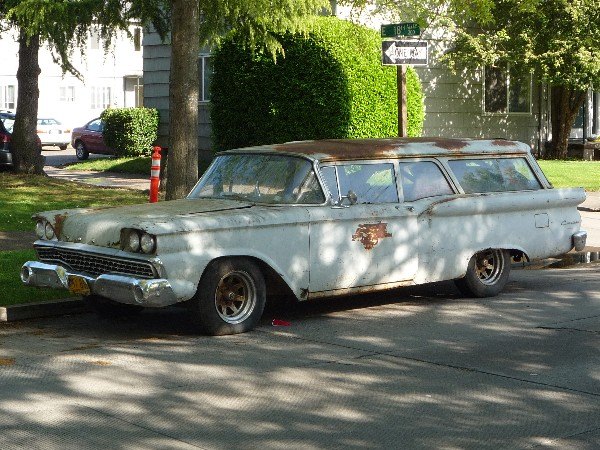

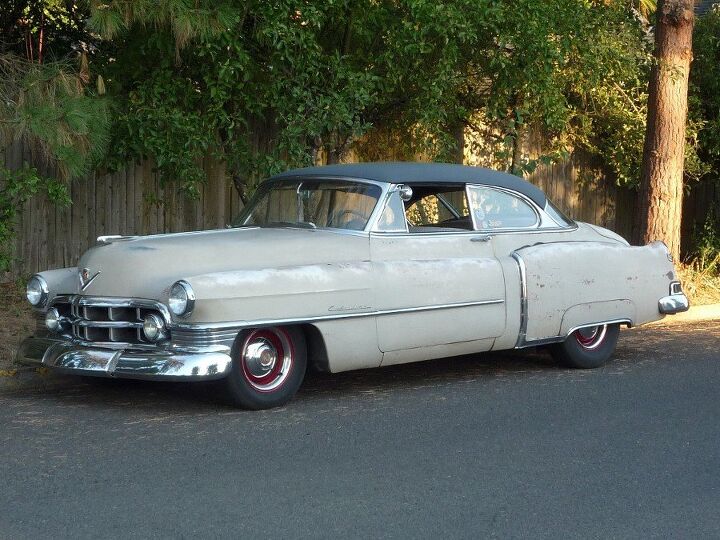
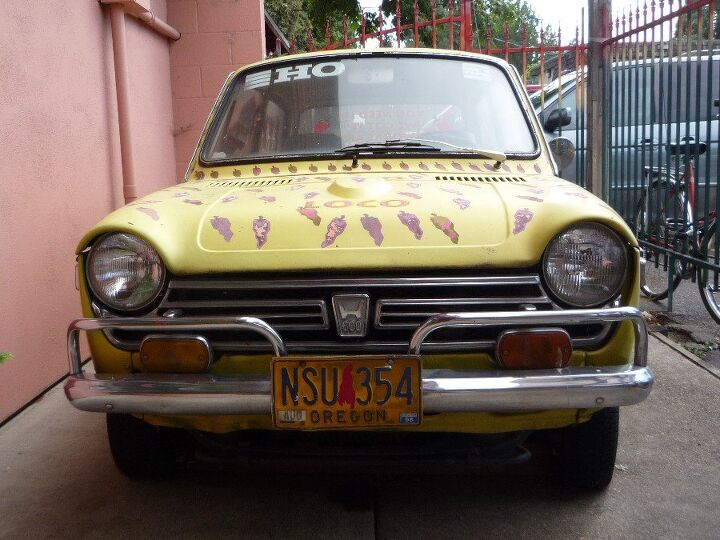


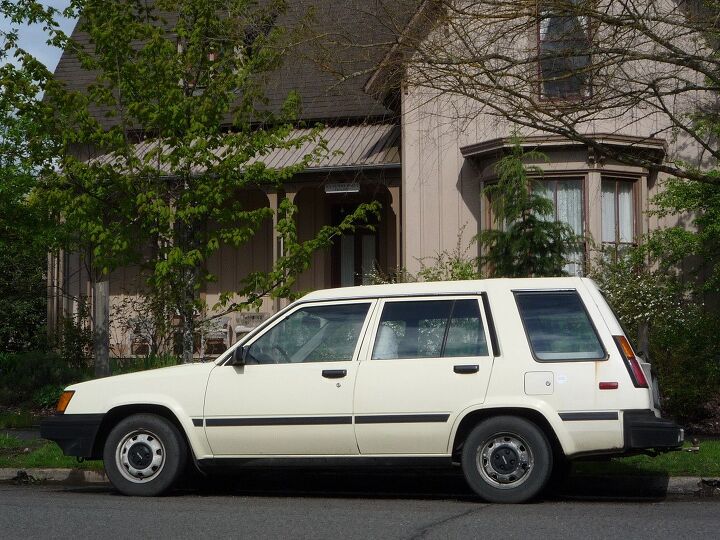
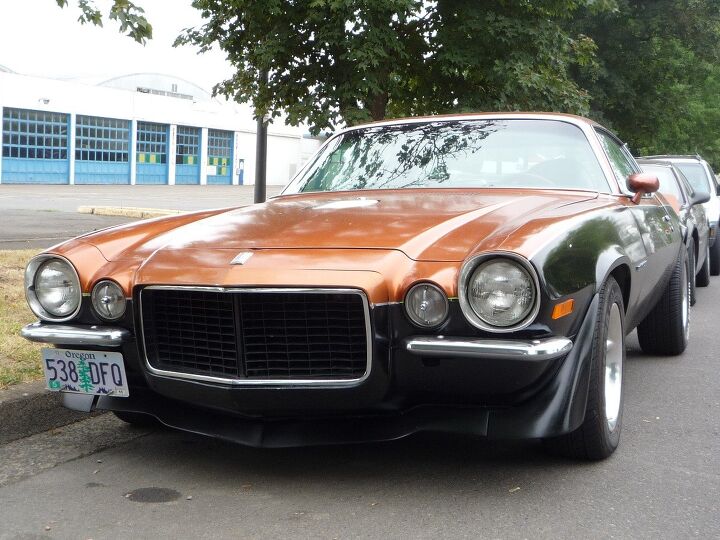
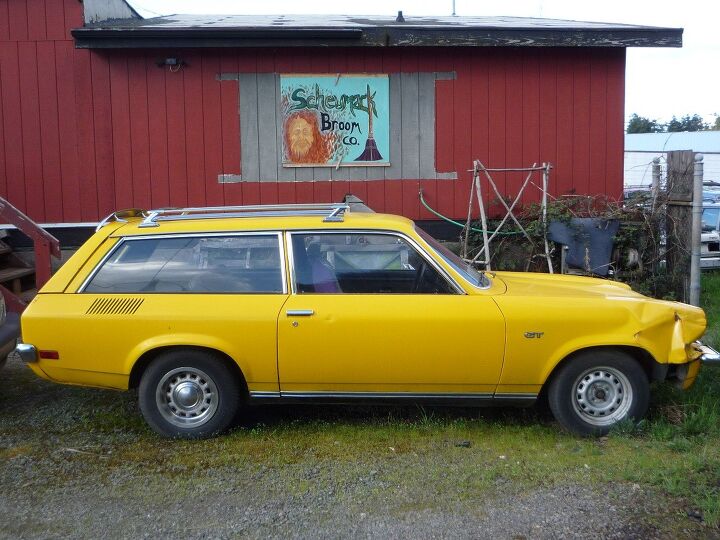

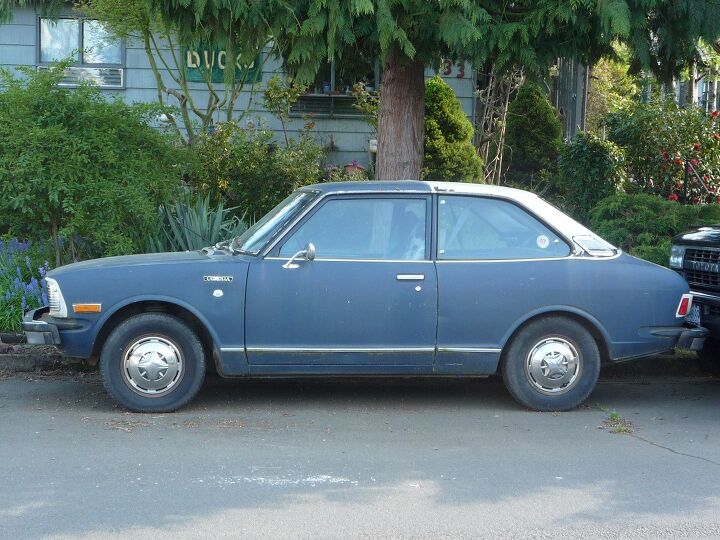
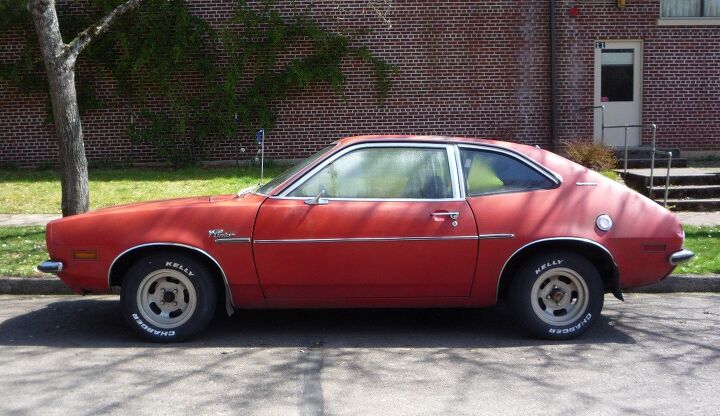



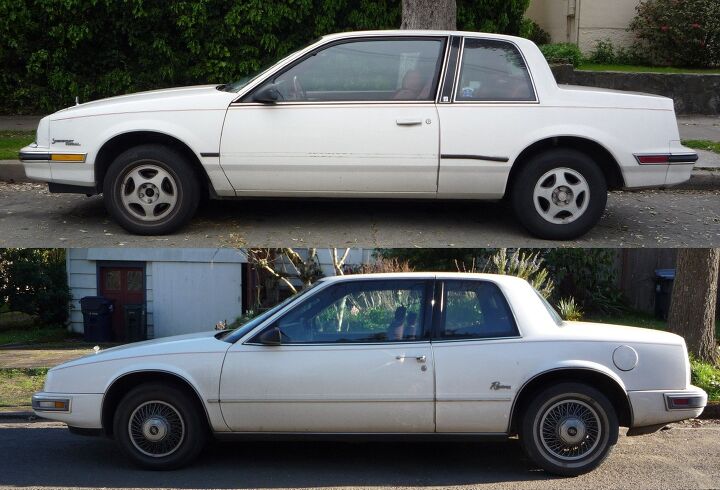
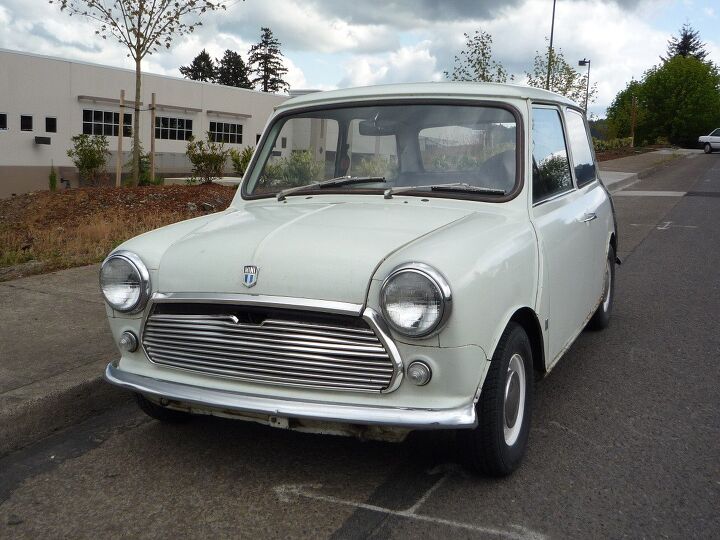
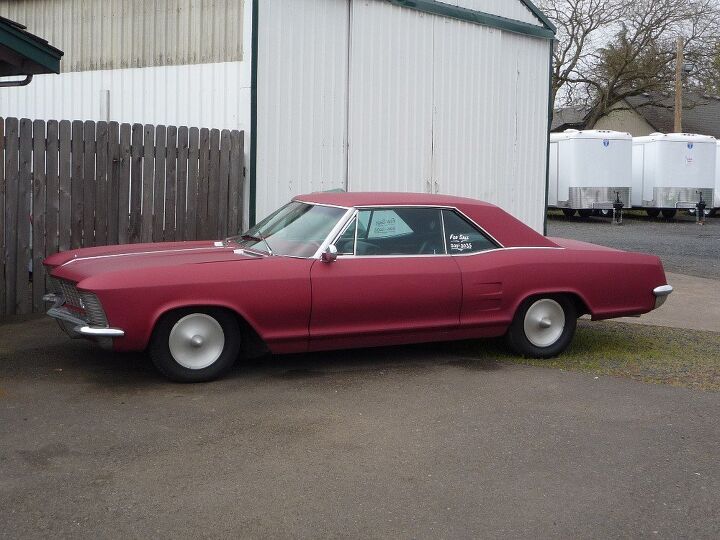
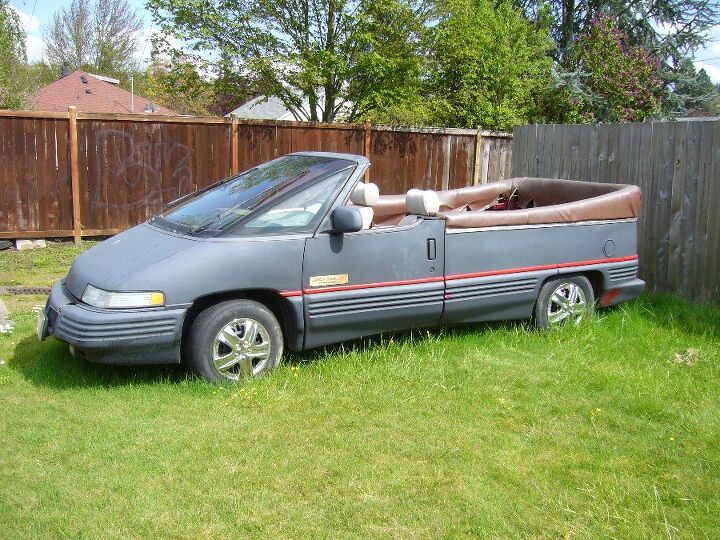
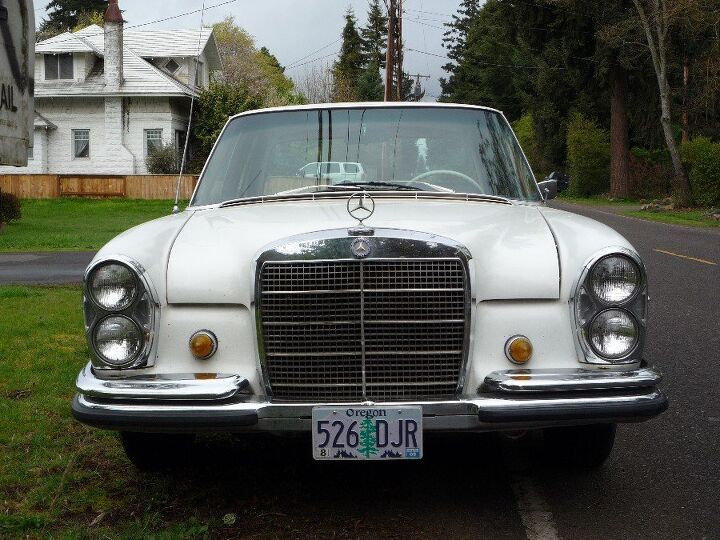
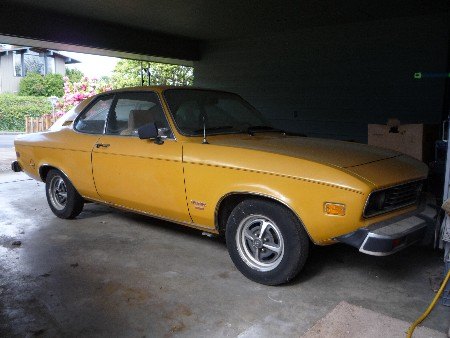

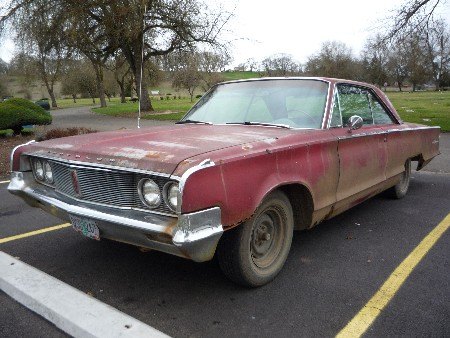
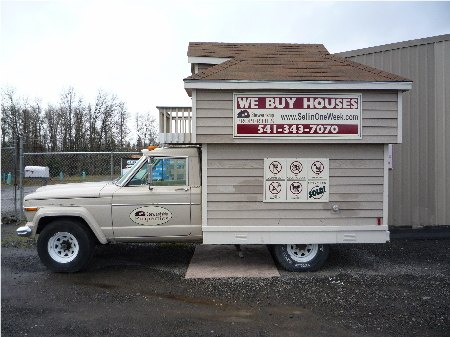
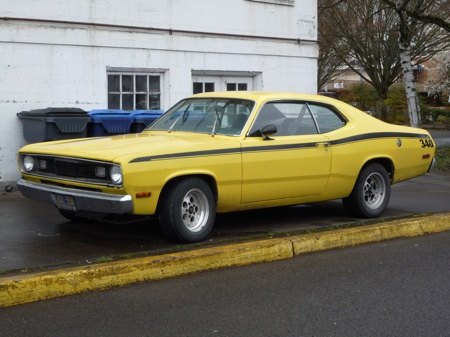

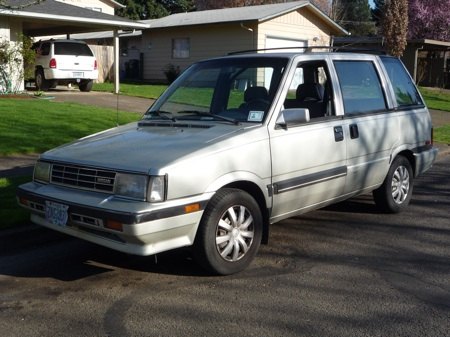



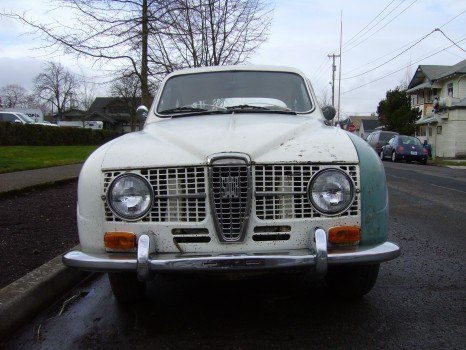













Recent Comments